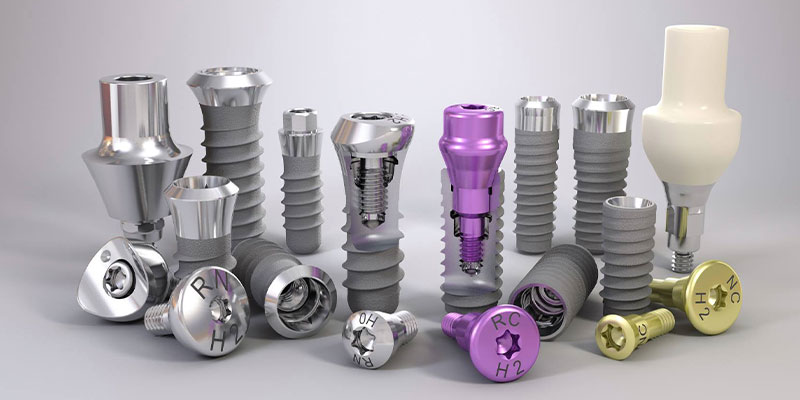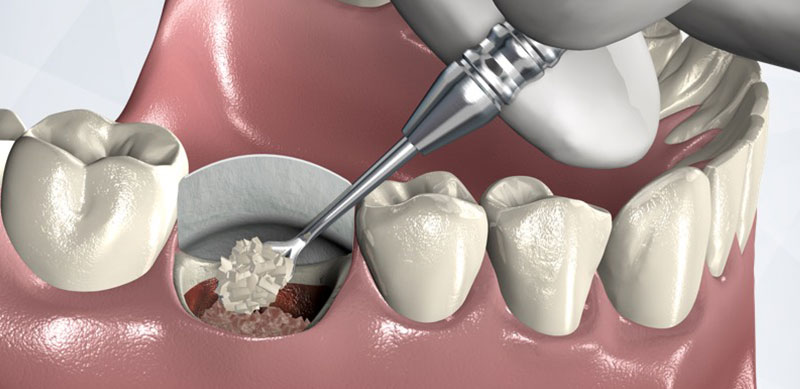Multiple Teeth Dental Implant
A dental implant can support a replacement tooth. Dental implants provide a simple solution for replacing missing teeth. The procedure will leave you with a beautiful smile that looks and feels natural. If two or more of your teeth are missing, you may need multiple implants to solve this problem. Dental bridges and implants can be combined to replace many teeth at the same time.

Multiple dental implants
Implant-supported bridges can replace several missing teeth. Depending on the needs of a patient, implants can replace both natural teeth and some of their roots. If a person has one or two missing teeth, one implant will be needed for each tooth. But if an individual wants to replace many lost teeth, fewer implants may support the replacement teeth.
Multiple Tooth Implant Treatment Procedure at shanti dentals
The multiple dental implants procedure is a very simple process. However, it may take 3 days to 3 months to complete the whole treatment so it requires a bit of patience and few precautions. But the result is always worth it.
At first, the dentist would physically examine your mouth and ask a few questions pertaining to your habits, hygiene and medical history. They may perform an x-ray of the mouth for better diagnosis. The next few visits involve the implant installation and loading process.

Steps Involved in the Installation of Multiple Dental Implants

Step 1: Attaching the implants to the jawbone
The dentist would use a scalpel to cast off the gum flaps at the site to reveal the jawbone underneath. Or, they could make a small punch when the bone levels are good. Then, the implants are placed into the jawbone and the gum flaps,if opened, are sutured back in place. These sutures are removed within 7 to 10 days. The implant is then covered with temporary teeth or a sealing cap to isolate this area from the remaining oral region and to prevent any infection.
This arrangement is then allowed to heal for 3 to 4 months. During this period, the implant and the jawbone bond together to form a strong base for the artificial teeth.
Step 2: Placing the abutments
Once your implants have integrated with the jawbone, your dentist would go ahead with placing the abutments. This is a bridge-like structure that acts as the connecting link between the implants and the artificial teeth. Your gums may sometimes be left to take a good shape around the abutments for 2-3 weeks.


Step 3: Attaching the artificial teeth
The artificial teeth are then attached in a bridge-like arrangement to the abutment. The doctor would advise you to take some precautions over the next few weeks.
Benefits of Replacing Multiple Missing Teeth with Dental Implants
An implant-supported crown is far superior to a traditional tooth-supported dental bridge. Here’s why:
A long-term solution
A dental bridge or partial denture may have a more affordable upfront cost, but it’s not a permanent tooth-replacement option. Often, bridges and dentures need to be maintained and even replaced throughout your life, which can be more costly down the road. Dental implants have a 97% success rate, which is significantly higher than any other tooth-replacement option.
Standard of care
Dental implants are recognized as the “standard of care” today for missing teeth because the jawbone will bond with the titanium implant and provide a strong base for the new crown. The result is a stable and strong replacement that looks, feels, and functions just like natural teeth.
Preservation of surrounding teeth
Your adjacent natural teeth will be preserved with a dental implant rather than being grounded down and destroyed from a bridge.
Ease of care
Since dental implants function like a natural tooth, you simply need to care for them as you would for other natural teeth with good daily oral hygiene.
The first step of the procedure is usually to use a scalpel to create and peel back two gum flaps to expose the underlying jawbone. A hole will then be drilled into the jawbone to make room for the implant, and the implant will be inserted. This process will be repeated for all of the implants. It may be possible for temporary teeth to be worn over the implant sites. If not, a temporary healing cap will be screwed into the top of each implant to seal off the implant’s interior from the surrounding oral environment. The two flaps of gum tissue will then be trimmed, shaped and repositioned back over the jawbone and around the implant’s healing cap. A few sutures will be placed to hold the gum tissue in place; the sutures will be removed in seven to ten days.
During the following two to six months, the implants and the bone will be allowed to bond together to form anchors for your new teeth. It will then be time to uncover the implants, remove the temporary healing caps and attach the abutments. Your gums will be allowed to heal for a couple of weeks following this procedure.
Finally, the bridge created to replicate your natural teeth will be attached to the abutments. After a short time, you will experience restored confidence in your smile and your ability to chew and speak normally.

